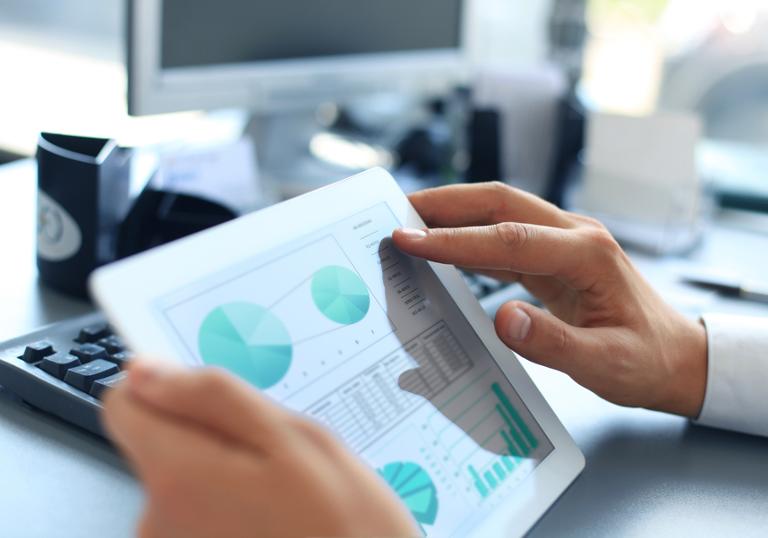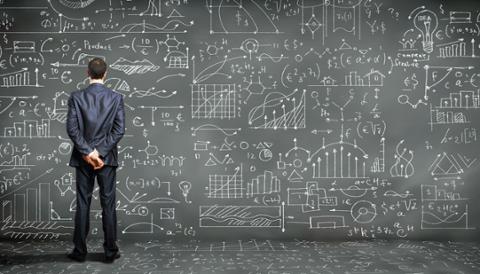As the integration of data into business decision-making continues to increase in both speed and scope, more end-users are turning to dashboards and other forms of visualized information to figure out what analytics software is actually telling them. Whereas not so long ago, analytics were presented almost exclusively to high-level managers or selected specialists, today’s workers are given access to high-level data on everything from manufacturing processes to long-range workforce planning. With the increasingly widespread use of analytics platforms, there’s a growing need on the part of data scientists to understand how workers from all parts of the organization can most effectively absorb the data given to them. According to Pamela Pavliscak, founder of Change Sciences in New York City: “Data scientists will need to think about accurate and engaging presentation. They won’t need to be UX experts, but they’ll need to understand the dynamics of presentation.”
A Different World
Accurate and effective presentation can pose a challenge for many data scientists, given how UX and data science require different thought processes. “This isn’t about data scientists becoming experts on user-centered design,” Pavliscak said. “We need to have a better understanding of the data that’s driving the experience and know what people are really doing.” Rachel Shadoan, research scientist at Akashic Labs in Portland, OR, sees data science and UX as “just different tools to answer questions. Some questions are a lot easier to answer with data, some are dramatically easier to answer with UX.” That said, she believes “it can be hard for a data scientist who’s accustomed to working with significance and wee small
P values and so on to feel comfortable making recommendations based on the small samples typical of ethnographic research and usability studies.” As an example, she recalled an engineer once asking how she was sure a finding was true. “In UX,” she answered, “it doesn’t necessarily have to be true—statistically significant, a pattern found in the majority of users, whatever—in order to be useful. If the goal is building better products, useful is often better than ‘true.’” With that in mind, some data scientists may have to accept becoming comfortable with a degree of uncertainty. “You’re probably not going to be able to ‘prove’ things with UX the way you are accustomed to with data,” Shadoan said. “But that doesn’t mean it’s not incredibly valuable.” In addition, Pavliscak noted, the environment in which data scientists conduct their work is changing. “Teams keep getting bigger and more nuanced,” she observed. “Recognizing how embedded digital experience is in everyday life leads to more diversity in knowledge in teams.” In coming years, she added, people will expect data scientists to learn more about user experience, because their expertise underlies artificial intelligence, machine learning and so much of UX’s core.
What UX Means for Your Role
That doesn’t mean data scientists will have to turn themselves into full-blown UX designers. Instead, many say, they’ll need to better understand the dynamics of user experience: how users can most effectively absorb and interact with the data that’s presented. Sometimes, Pavliscak said, that experience will be relatively simple and data-driven, such as when Netflix or Amazon recommend specific books or films to users based on their past purchases. In other instances, data scientists need to consider how to present complex information in a more engaging way. “They won’t need to be UX experts,” she said. “But they’ll need to understand the dynamics of presentation.” That means UX skills can become “a really great way for a data scientist to distinguish themselves,” Shadoan said, “and as more data scientists enter the market, that’s always a helpful thing.” While she doesn’t see UX skills becoming a key part of a data scientist’s job description, she believes understanding UX as a discipline will become increasingly important: “In many instances, data scientists will be collaborating closely with UX researchers, and to get the most out of those collaborations it’s important to understand how UX can complement data science.”
Getting Up to Speed
Of course, if you’re a data scientist, you’re busy. So how are you supposed to absorb even the most basic fundamentals of the user experience? In addition to reading up on the subject, Pavliscak suggests using your company’s UX team as a resource. “They’re going to be very accessible to you,” she said. “And UX people want to know the data scientists, anyway.” If you work on your own or don’t have ready access to a UX team, a variety of courses are available, online and off, to introduce you to the area’s fundamentals. “
General Assembly in particular has good introductory courses taught by smart people,” Pavliscak said. Shadoan suggests reading Steve Portigal’s
Interviewing Users: How to Uncover Compelling Insights as a good starting point. “I highly recommend a hands-on approach. Befriend a user researcher—you almost certainly know one—and ask to shadow them on a few interviews, or watch a focus group or participatory design workshop.” Again, it’s important to accept that UX often requires you to view solutions in a different way than data scientists are used to. “Be comfortable with a little uncertainty,” Shadoan said. “You’re probably not going to be able to ‘prove’ things working with user experience the way you are accustomed to with data—but that doesn’t mean it’s not incredibly valuable.”


